Post by Kasey Judd, undergraduate in Psychology pursuing an Interdisciplinary Neuroscience minor at Portland State University.
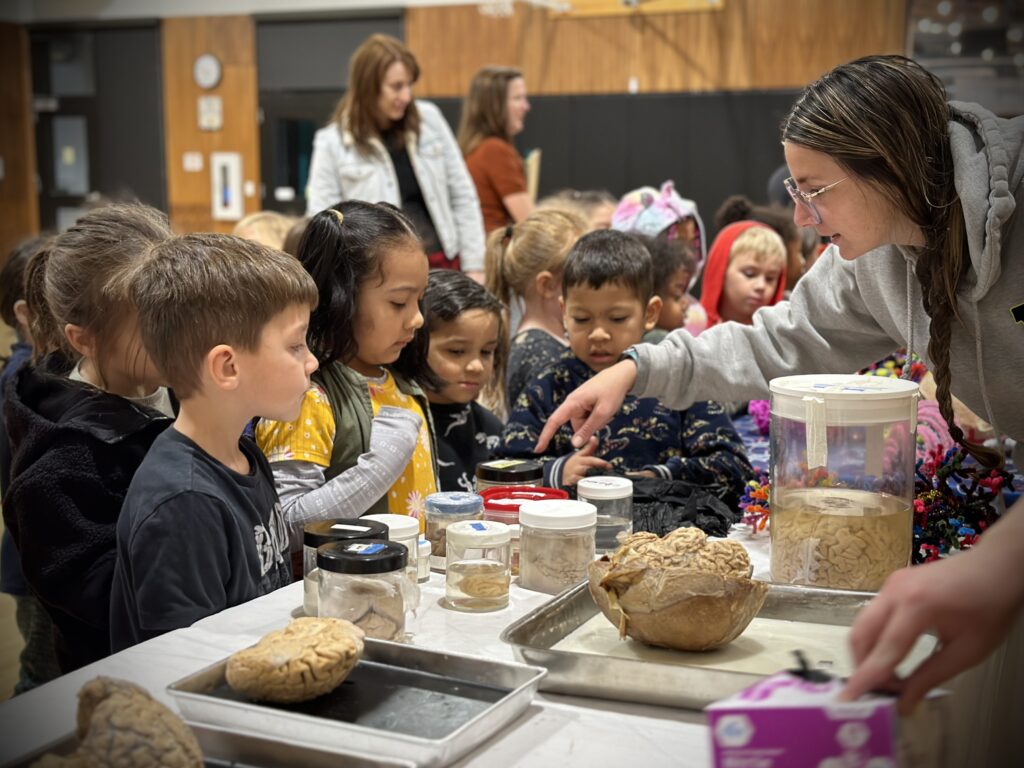
“Hello, my name is Kasey and I am studying Psychology and Interdisciplinary Neuroscience at Portland State University. I think brains are fascinating!”
— Kasey Judd, undergraduate at PSU
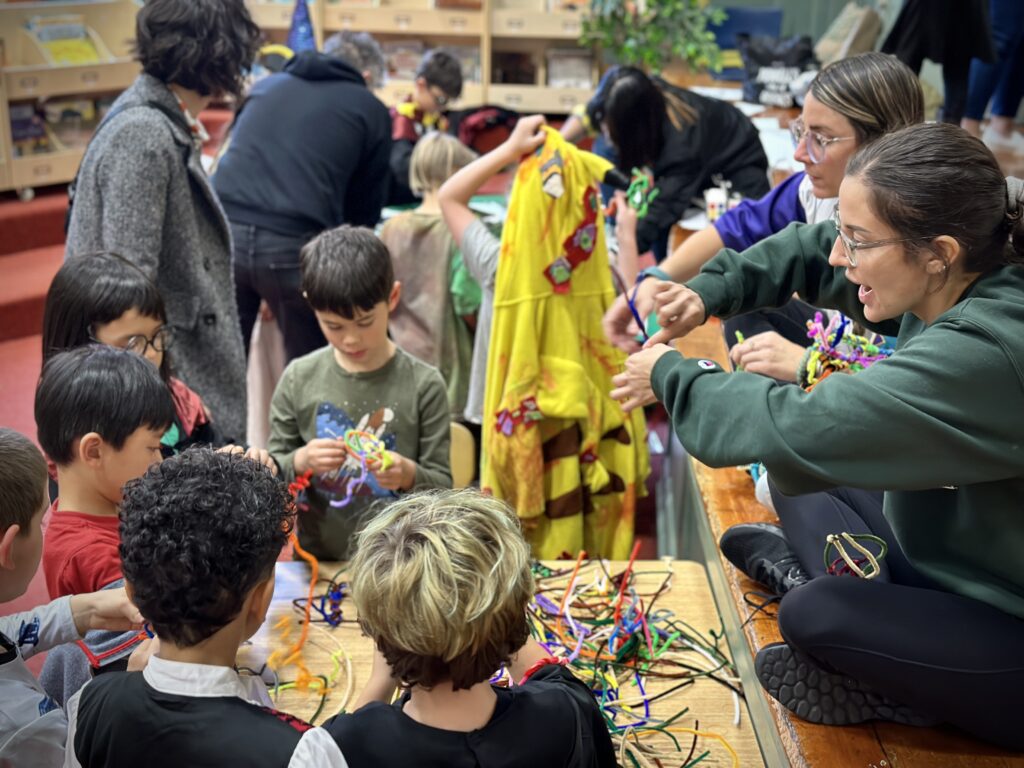
This is typically what I’d say as we briefly introduced ourselves to kids in the many schools we visited as outreach volunteers this term. Through these visits with NW Noggin I have learned an immense amount of cool and gnarly things. I initially thought I was going to teach all of these youth about the brain, when truly they taught me – everything from one child’s encyclopedic knowledge of fish brains and their skeletons, to additional interests, school facts, deep questions and more!
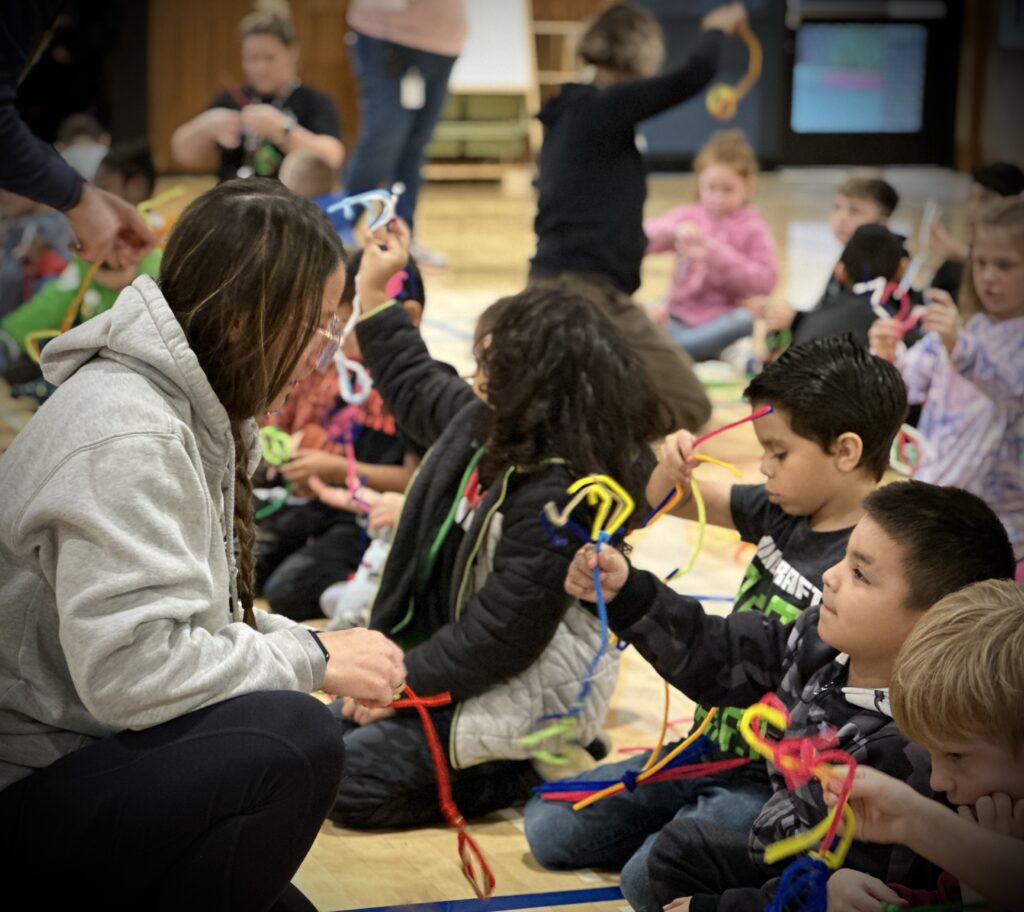
LEARN MORE: The Diversity of the Brains of Ray-Finned Fishes
LEARN MORE: What can fish brains tell us about visual perception?
LEARN MORE: Comparative analysis of intermuscular bones in fish
What caught my eye most of all was how they perceived and shared things through their art.
One activity I enjoyed with kids was making neurons out of pipe cleaners. They all listened intently and most would finish but be excited to keep crafting their homemade brain cells after school. However, as I saw them watch me and listen I always wondered what they were thinking and how they felt about art. So, I would ask them as they added unique dendrites, or chose certain colors, or started creating something completely different why they went in that particular direction.
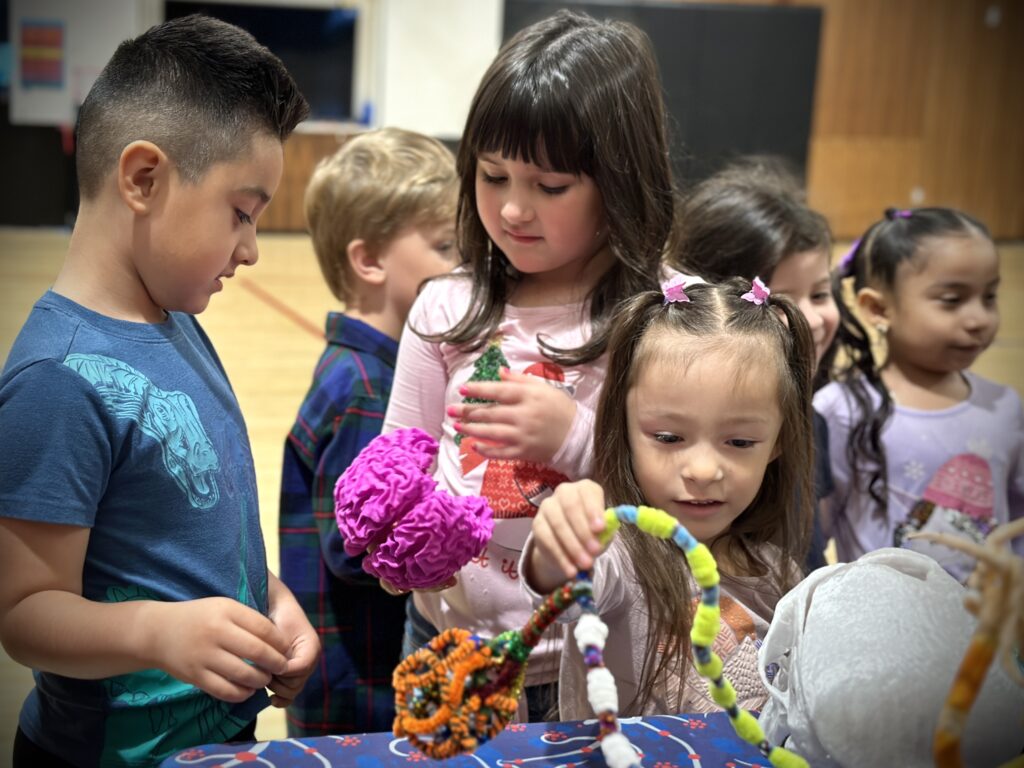
It was just so intriguing to see how each and every one of us, although we may set out to make the same type of art, will still see and do things differently. I saw all these kids building neurons in their own unique ways. Through art we get to express ourselves as creatively and culturally distinct individuals.
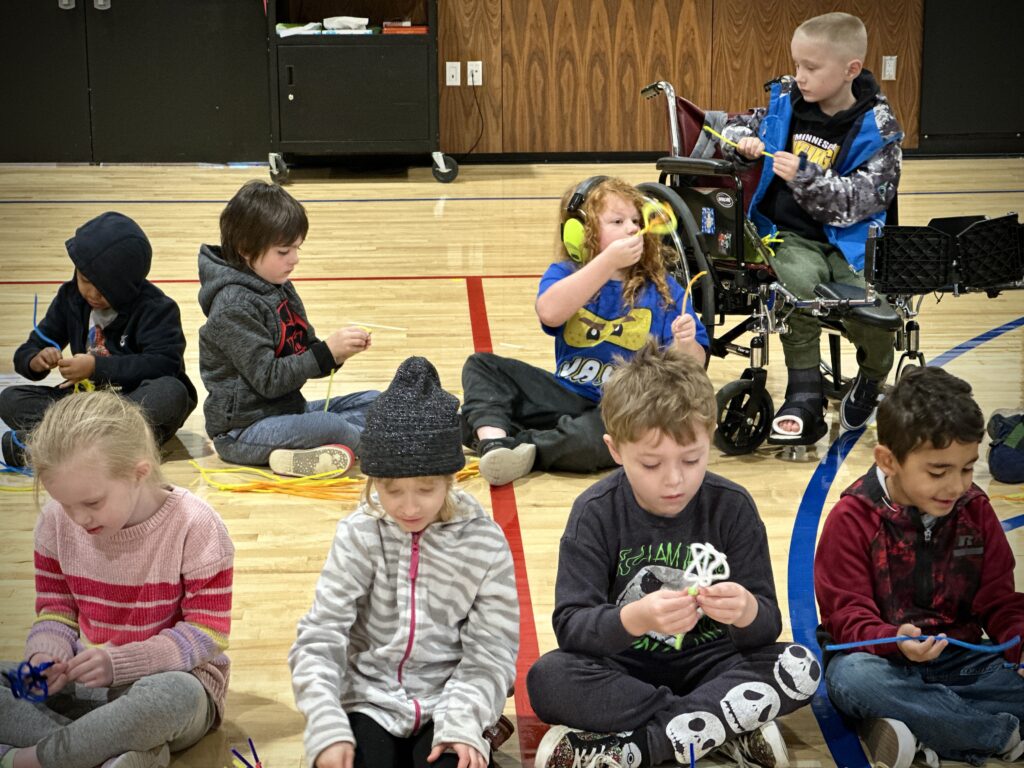
LEARN MORE: Make your own pipe cleaner neuron!
Neuroplasticity And Child Brain Development
If you think about it, any type of creative expression allows you to explore new ways to communicate and engage with the world, which encourages greater flexibility and changeability in our brains. This is known as neuroplasticity. Brain plasticity or neuroplasticity in the ability of neural networks in our brain to change through growth and reorganization.
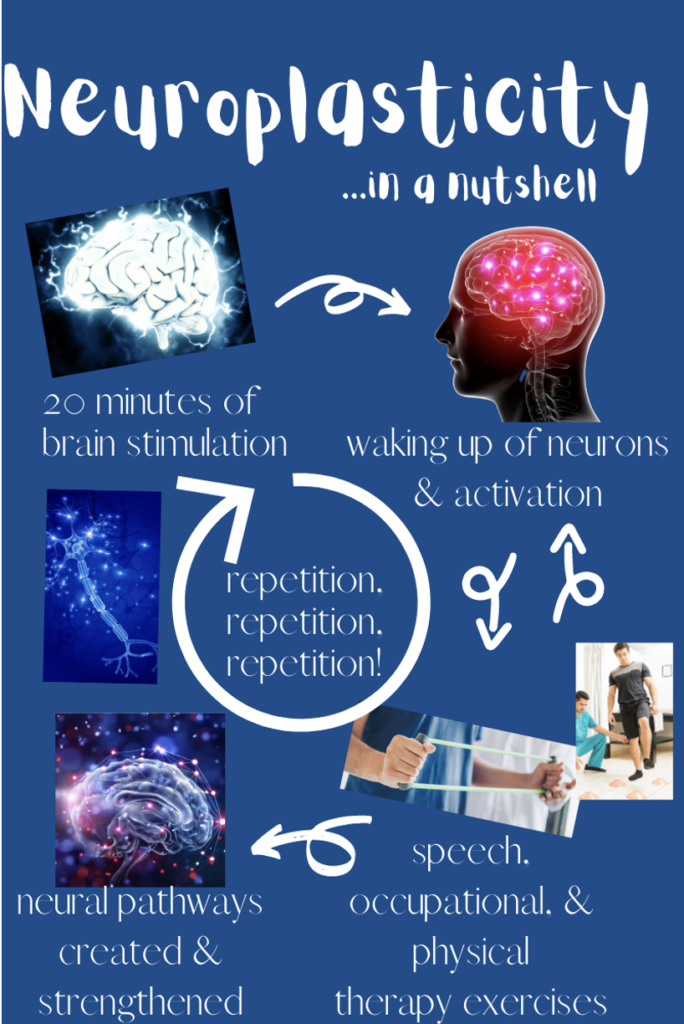
What encourages neuroplasticity? Novelty, motivation, self-directed engagement – and art – all serve to make our brains easier to change and adapt.
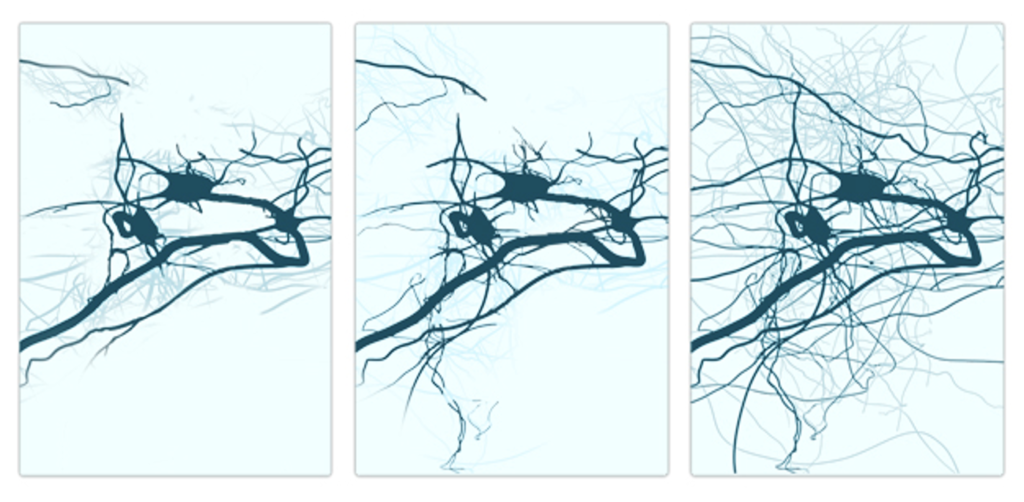
IMAGE SOURCE: Neuroplasticity
Art Therapy
Art affects children’s brains in unique and positive ways. Art activities develop brain capacity in early childhood. Art making allows children to experiment and take risks, which helps them become more confident and creative as well.
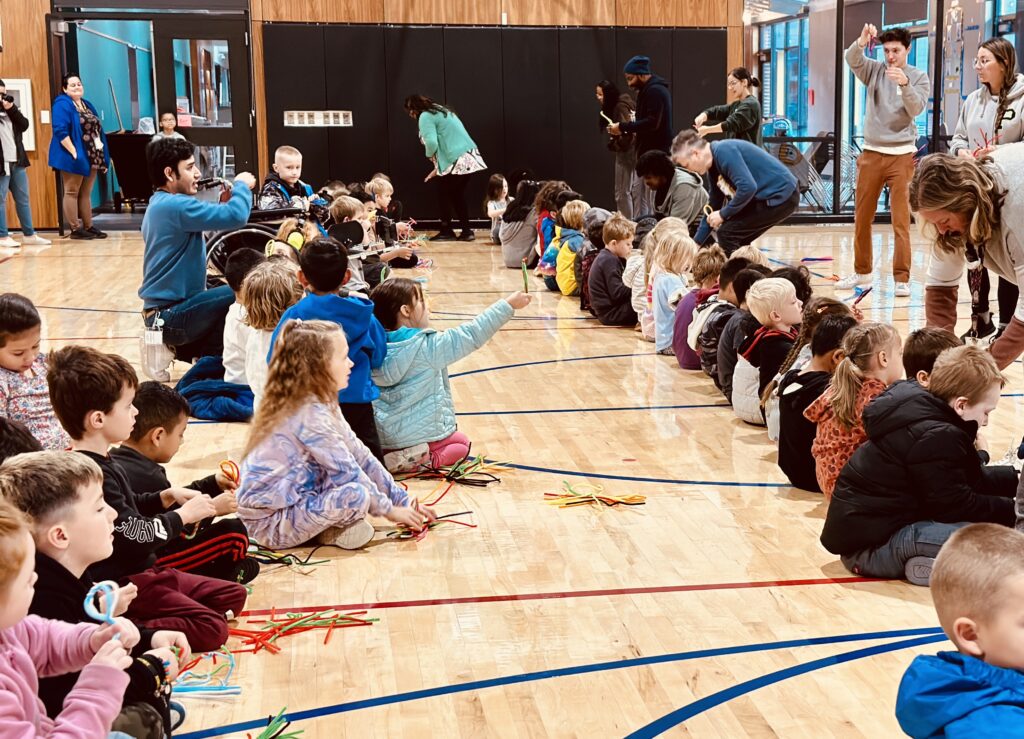
Art therapy is a form of psychotherapy that involves the encouragement of self expression through art. Therapists use it to help patients interpret, express and process their emotions and thoughts.
Art engages children’s senses in open ended play and supports the development of cognitive, social-emotional and multisensory skills. Art therapy promotes neuroplasticity – that greater ability to change connections, and thus thoughts, perceptions and behavior – which can help people recover from traumatic brain injuries (TBIs), strokes and other insults to the noggin. In a study conducted by Professor Semir Zeki, Chair in Neuroaesthetics at University College London, participants underwent brain scans while being shown images of paintings by major artists. The study found that when people viewed the art they thought was most sublime, blood flow increased by as much as 10% to regions of the brain associated with motivation and enjoyment. It was equivalent to looking at a loved one.
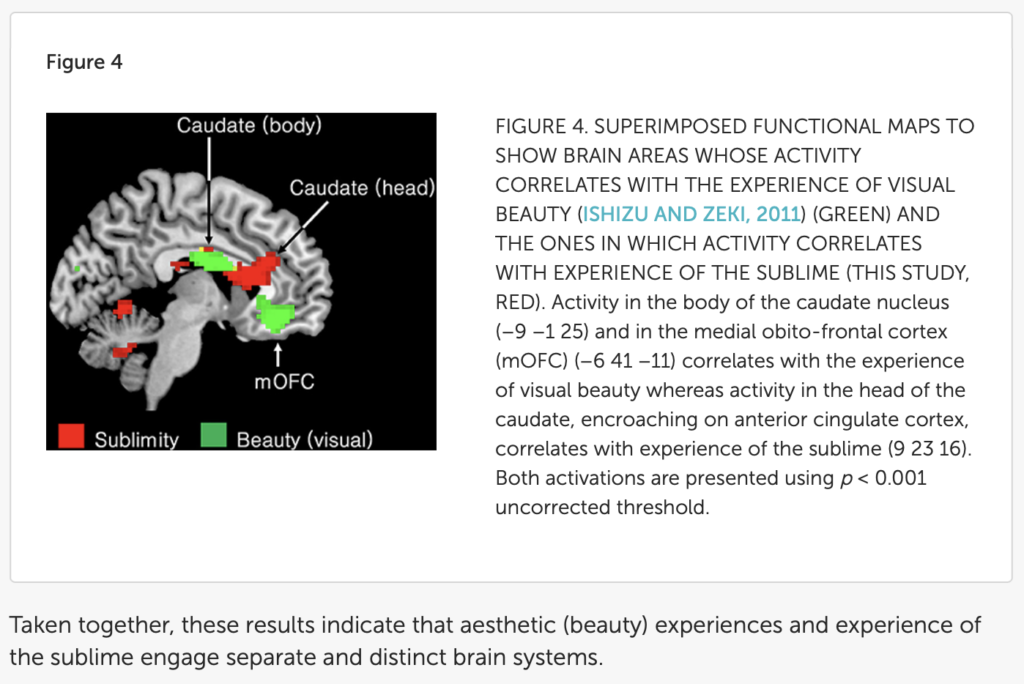
LEARN MORE: A neurobiological enquiry into the origins of our experience of the sublime and beautiful
LEARN MORE: How a blend of science and art is improving neurological health
LEARN MORE: Where art meets neuroscience: a new horizon of art therapy
LEARN MORE: Your Brain on Art: The Case for Neuroaesthetics
LEARN MORE: The neural determinants of beauty
LEARN MORE: The neural determinants of abstract beauty
LEARN MORE: How Art Changes Your Brain
LEARN MORE: Art – an opportunity to develop children’s skills
LEARN MORE: Brain Development and the Role of Experience in the Early Years
LEARN MORE: The HEALthy Brain and Child Development Study
LEARN MORE: Your Brain on Art: The Case for Neuroaesthetics
I remember a day in kindergarten when my teacher asked us to draw what we wanted on a large canvas. Looking back I feel like it could have been some sort of expressive art therapy. As I started drawing, I recall noticing a fellow kid in my class looking sad, confused, and maybe a little worried. Through their emotions, I noticed something was wrong, so I went over to to see what was the matter. I truly don’t even know if I knew what I was doing for the drawing, but nonetheless, I was there for support. I remember seeing them, reaching out, and wanting to connect while making art. In my recent outreach visits I had similar moments and they brought back this memory. It has kind of come full circle now, as I continue to want to study the brain and help children with their emotions. As you can see, outreach has been extremely eye-opening and a wonderful reassurance that I am on the right path for my career.
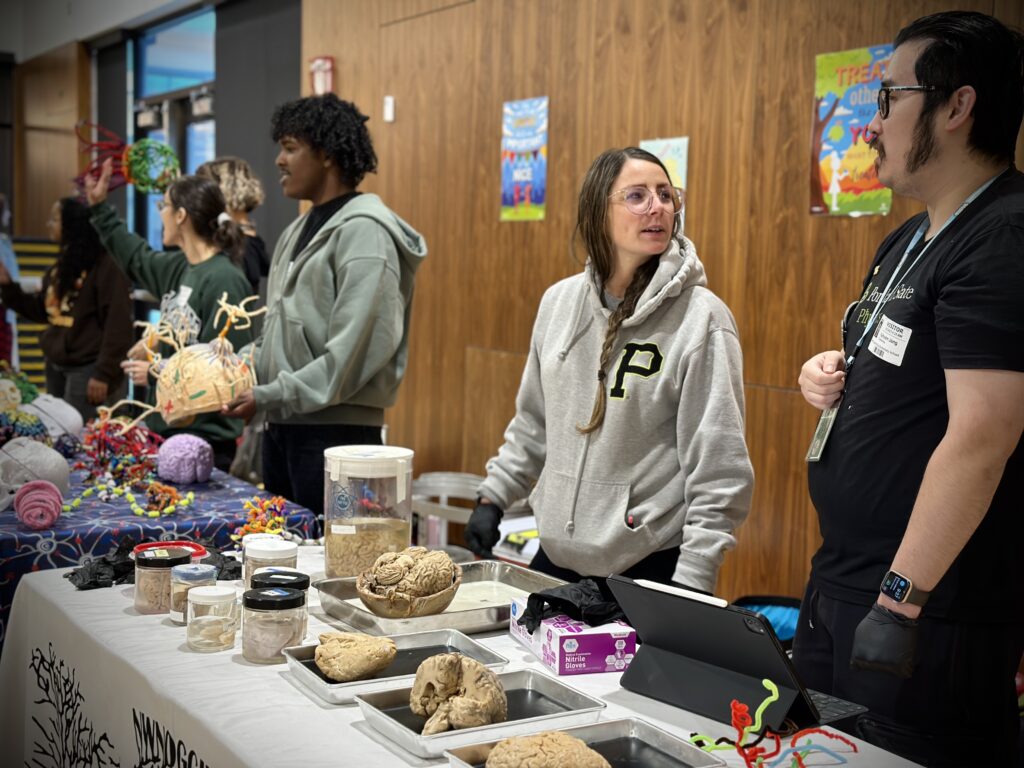
LEARN MORE: Art – an opportunity to develop children’s skills
Cultural Expression Through Art
It was amazing to discover the unique cultural diversity of children’s art.
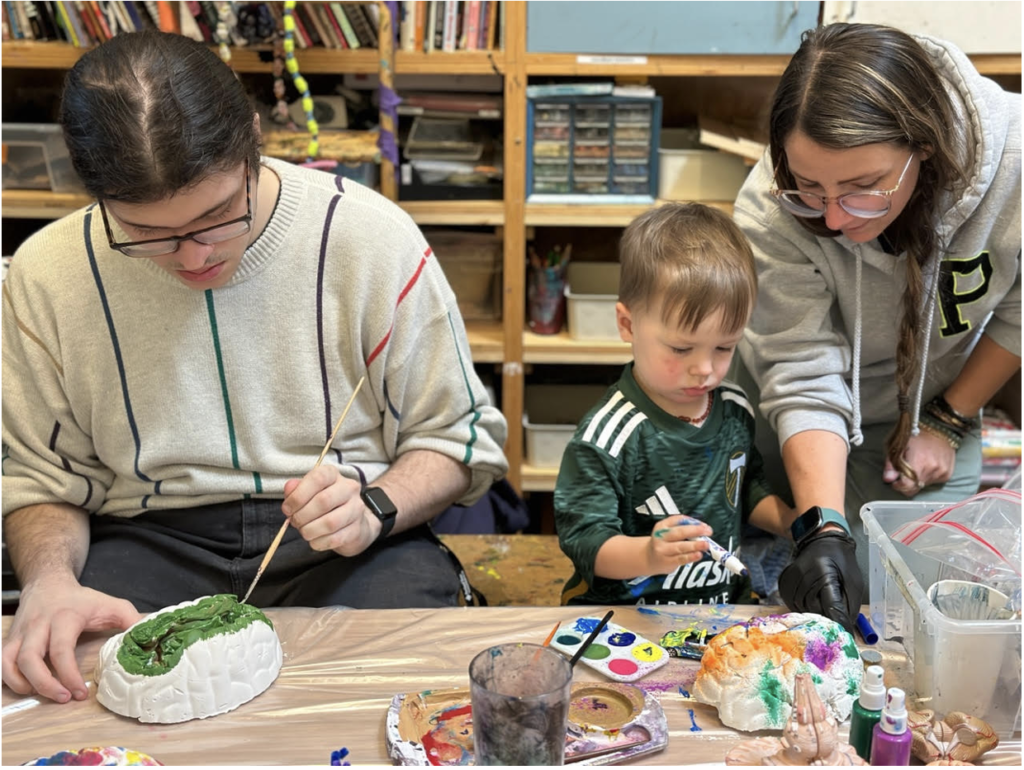
While creating brain landscapes during an outreach visit to p:ear, a houseless youth drop in center in Old Town Portland, I talked to a kid about his brain and why he chose to create it the way he did. He told me that he added certain pieces to remind him of where he came from. Other pieces helped remind him of the troubles he has endured throughout his childhood. Another young person explained to me that they had a religious symbol because religion played a big part in their life. They had created different sections of the brain to show all of the axonal wiring within as a symbol of every path that they have taken. It was inspiring to see the mix of cultural differences in each of their works. It reminds us that while we are different and diverse, we are all fellow humans wondering about our paths in life.
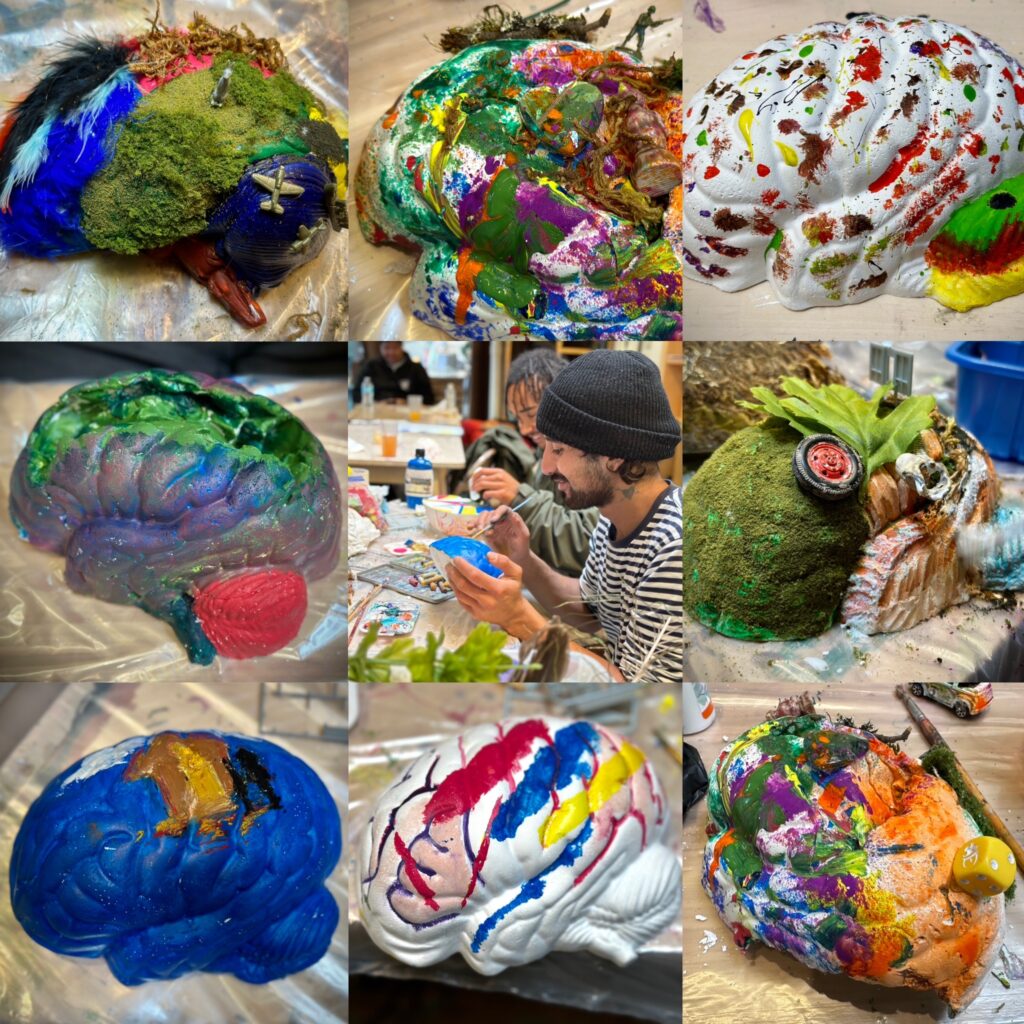
LEARN MORE: Noggin @ p:ear
LEARN MORE: Diversity in art expression
Art is quite a magical thing!
When children engage in art activities they are free to explore their creativity and imagination which is also essential for developing problem solving skills. Children express how they feel and think about the world through their art, which gives them a way to express the feelings and ideas that they don’t have the words to talk about. This helps them to cope with the stresses of growing up. It helps them develop a sense of their individuality, diversity, self respect and an appreciation for the creative work of others.
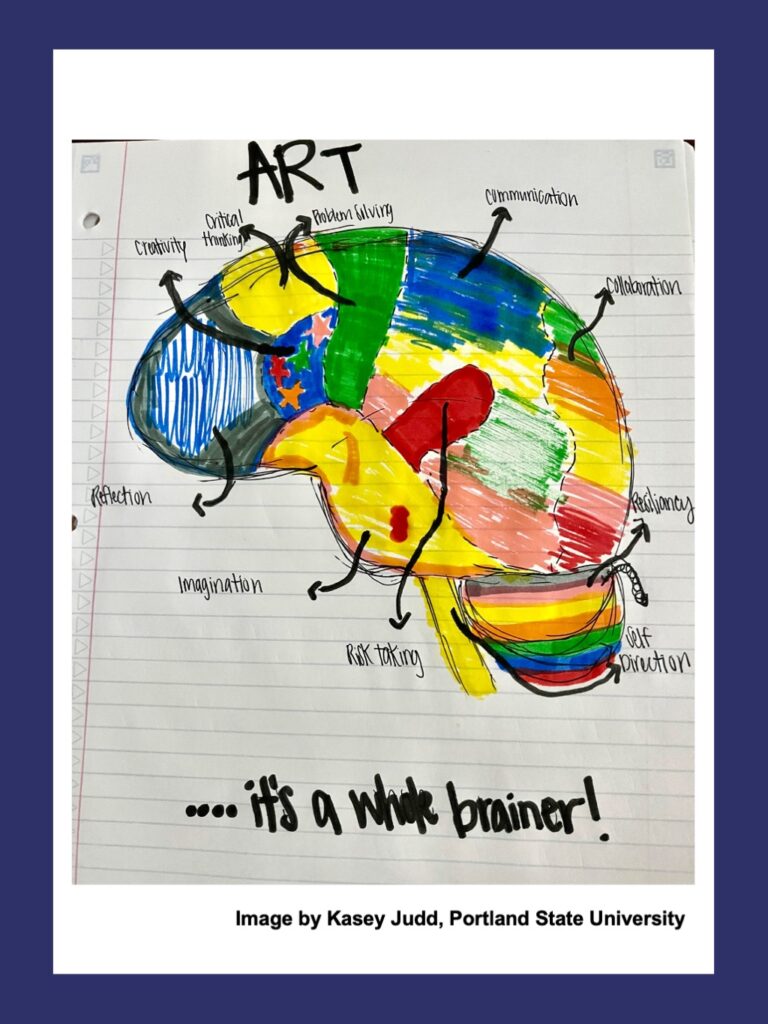
LEARN MORE: What’s the Connection Between Art and Brain Development?
LEARN MORE: An Art-Based Intervention Aimed at Improving Children’s Executive Functions
LEARN MORE: The Role of the Visual Arts in Enhancing the Learning Process
Neuroesthetics
Neuroesthetics is the study of how art and art making can measurably change the body, brain and behavior and how this knowledge is translated into practice.
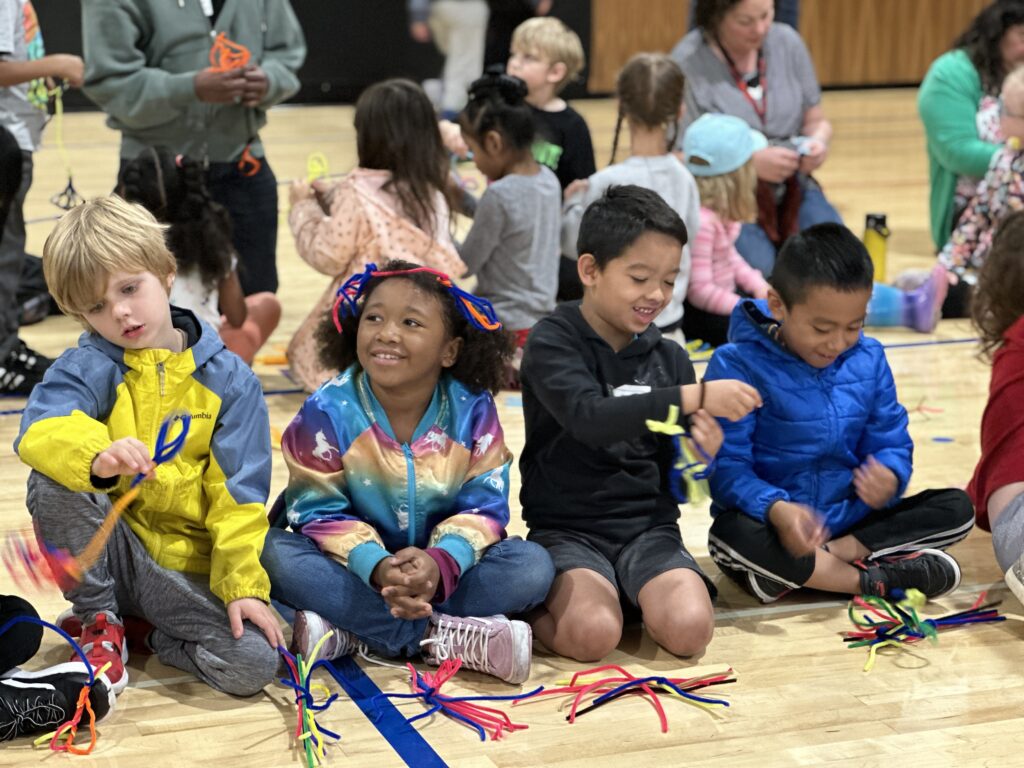
Neuroscience and neuroesthetics have benefited from an array of new imagining technologies, allowing scientists to observe and document the effects of visual art, along with music and dance, upon the human brain. The human brain does not have just one creative center.
Creativity requires the mixing and re-mixing of mental representations, or mental imagery – the ability to imagine things in your mind like traveling to a place you have never visited or doing things you have never done. Both art making and viewing art engage distributed brain networks in ways that promote more creative and innovative responses.
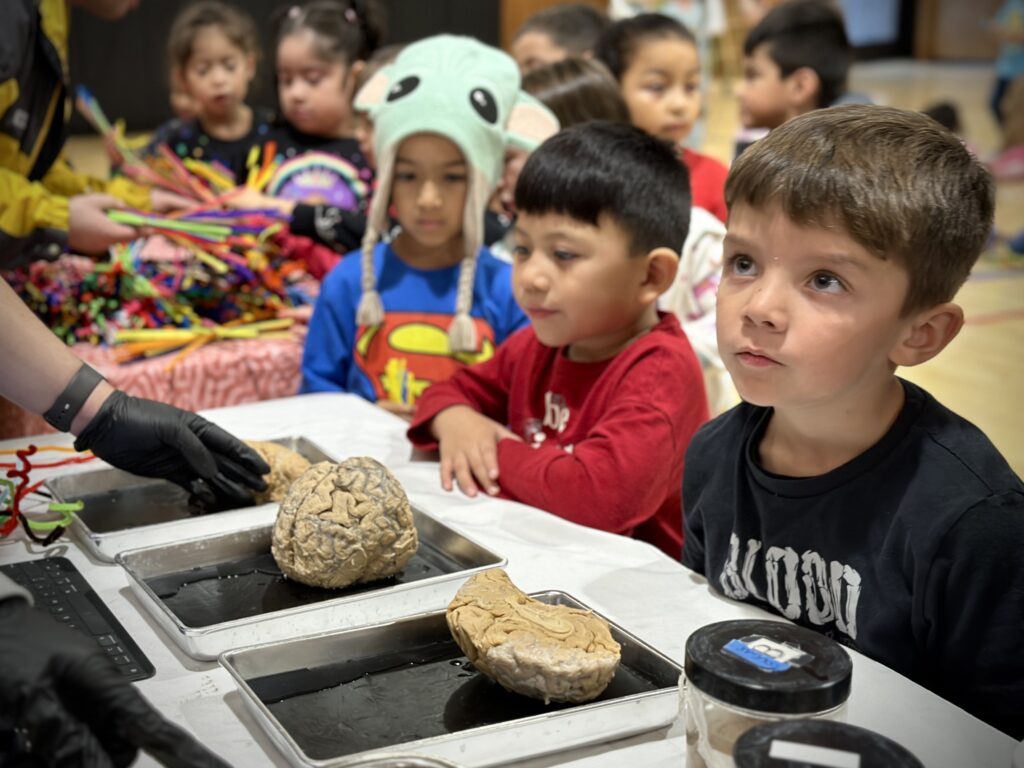
We use many parts of our brains when we create or visualize art.
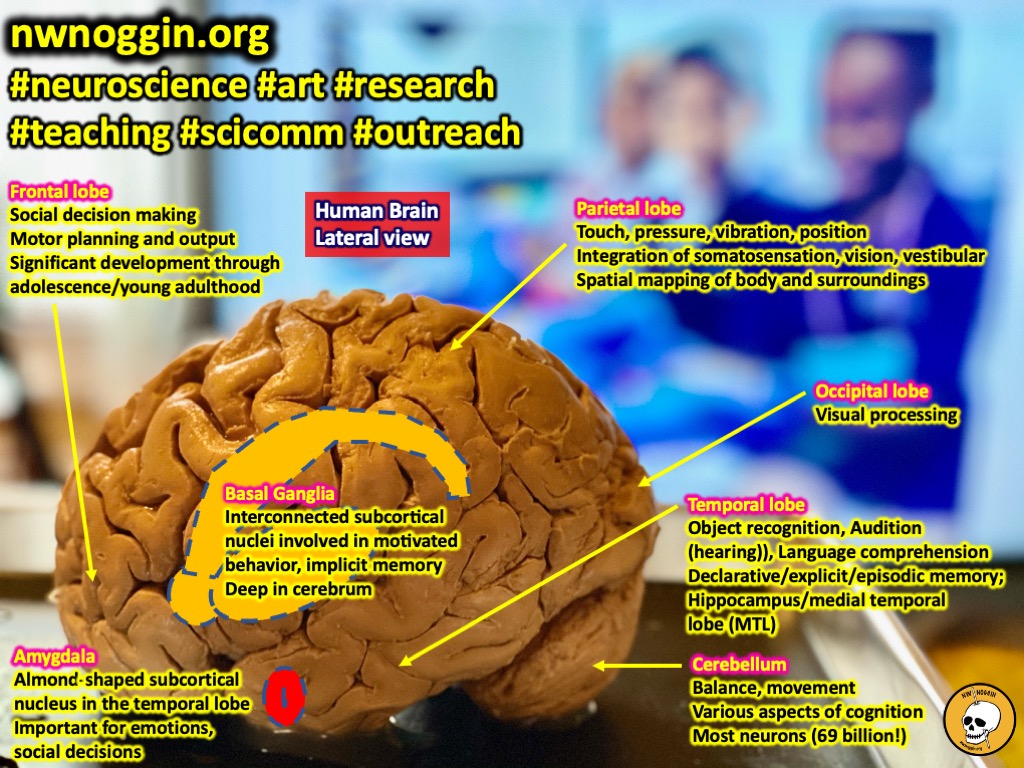
Frontal lobe cortex is considered an important contributor to creativity, responsible for working memory, attention, abstraction, planning, social decision making and cognitive flexibility. The hippocampus, in the temporal lobes, is responsible for our memories of experiences, and helps to re-create and apply these memories to new narratives, situations and ideas. The basal ganglia, an interconnected set of subcortical nuclei, allow for motivation, skills and implicit behavior. With practice and time, the brain improves in creative tasks. White matter connects these brain structures, allowing faster processing of information. A better connected brain can bring together more ideas and process information more efficiently.
LEARN MORE: Your Brain on Art
LEARN MORE: Connecting the Dots: Your Brain and Creativity
LEARN MORE: Your Brain on Art: The Case for Neuroaesthetics
LEARN MORE: Neuroaesthetics: How Art is Scientifically Proven to Help Brain Health
LEARN MORE: Neuroaesthetics: The Cognitive Neuroscience of Aesthetic Experience
LEARN MORE: An Analysis of Characteristics of Children’s Growth through Practical Art
LEARN MORE: The impact thinking framework: a process for advancing research-to-practice initiatives in neuroaesthetics
LEARN MORE: Mental Images and School Learning: A Longitudinal Study on Children
LEARN MORE: The impact of the digital revolution on human brain and behavior: where do we stand?
LEARN MORE: To create or to recall original ideas: Brain processes associated with the imagination of novel object uses
LEARN MORE: The creative brain: Investigation of brain activity during creative problem solving by means of EEG and FMRI
LEARN MORE: Emotional Creativity in Art Education: An Exploratory Analysis and Research Trends
Art and Emotion
Artistic creative activities help to regulate our emotions as well.
Neuroaesthetic research finds that a variety of art based approaches can help improve quality of life, mental health, speech, mobility, pain, memory, learning and more. The human brain is a complex and fascinating organ that plays a critical role in our ability to perceive, create and appreciate art. As we make art we engaged in self expression, which allows us as individuals to explore and communicate our innermost thoughts and emotions.
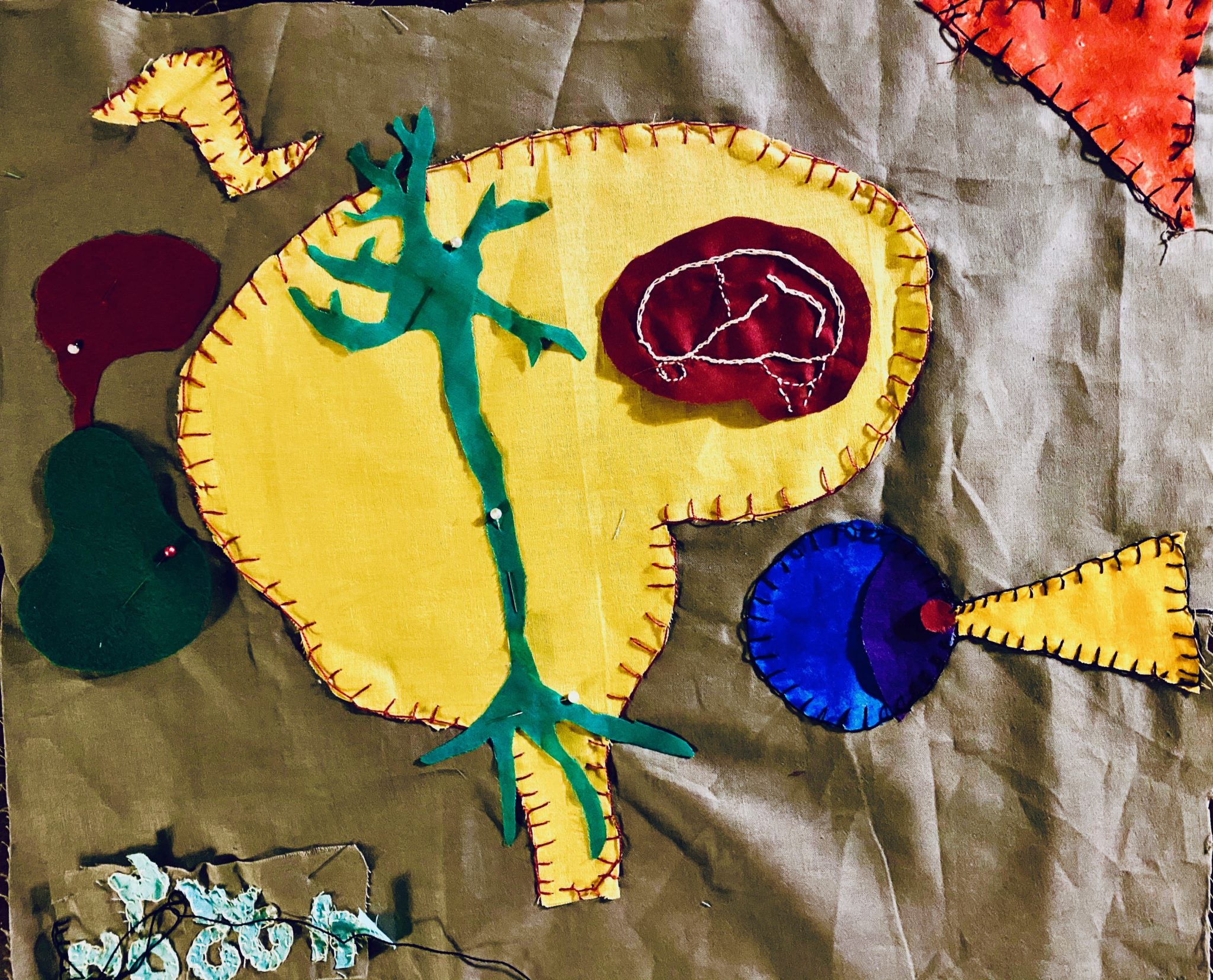
LEARN MORE: Sewing Memories, & Brains
LEARN MORE: Neighborhood Diversity and the Rise of Artist Hotspots
Art impacts us in so many beneficial ways, strengthening our brains and allowing us to express and remember, and relieve stress, anxiety and other harmful things. By being creative you can work through your own emotions and feelings. Art therapy used to help patients with different emotional disorders like depression and PTSD (post traumatic stress disorder) is evidence based and effective. It works.
LEARN MORE: The effectiveness of art therapy for anxiety in adults
LEARN MORE: Psychotherapy and Art Therapy: A pilot study of group treatment for patients with TBI
LEARN MORE: Complementary Medicine and Expressive Arts Therapy: Adjuvant for Recovery Following Neurosurgical Procedures
Seeing each other through brains and art
By going places with Northwest Noggin I’ve learned so much more about the brain and best of all I’ve learned how wonderfully diverse we are culturally. Culturally diverse art has impact, it lets us share our experiences and build pride in our own selves, our own stories and our own heritage.
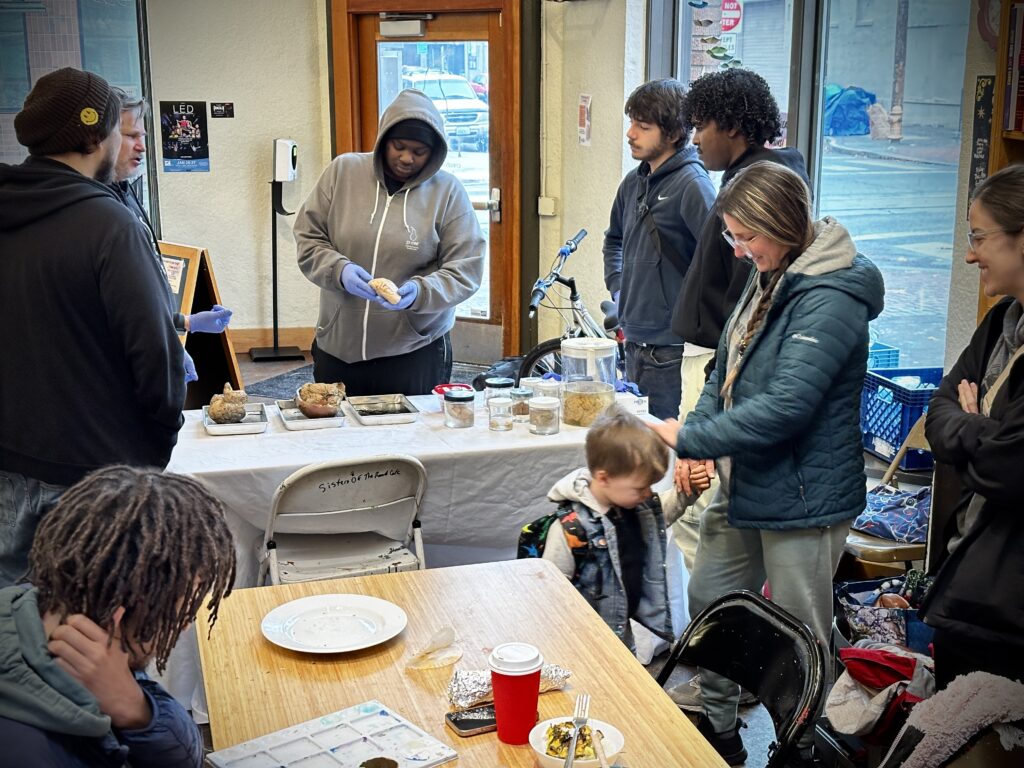
Artists come from somewhere, and seeing children and young adults create what they did during outreach revealed a bit about who they are. I saw kids ask other kids what they were making, which I thought was a good way for them to learn more about each other. I’ve learned that making and creating art together is a great way to integrate cultural diversity into early childhood settings. Art and questioning can teach us, and connect us. This was such an amazing experience and I will forever be grateful.


